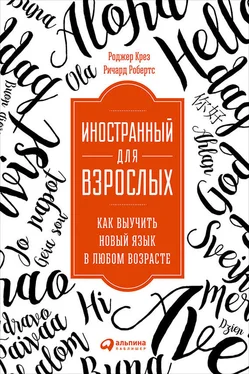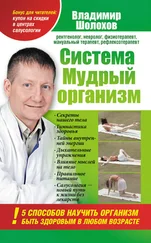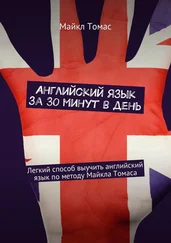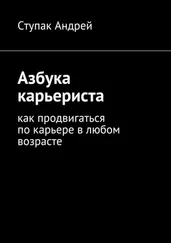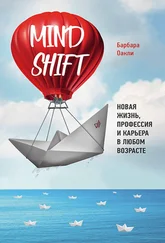Эти примеры метафор см.: George Lakoff and Mark Johnson, Metaphors We Live By (Chicago: University of Chicago Press, 1980), 44–45 (Лакофф Дж., Джонсон М. Метафоры, которыми мы живем. – М. ЛКИ, 2008).
Исследование выражения «разбить сердце» см.: Kathrin Abe, Nadja Kesper, and Matthias Warich, «Domain Mappings – General Results,» in Cross-Cultural Metaphors: Investigating Domain Mappings across Cultures , ed. Marcus Callies and Rudiger Zimmerman, 29–40 (Marburg: Philipps-Universitat, 2002).
Эту работу об идиомах см.: Raymond W. Gibbs, Jr., The Poetics of Mind: Figurative Thought, Language, and Understanding (Cambridge: Cambridge University Press, 1994); эти примеры взяты со с. 9.
Мысли о концептуальных совпадениях метафор и идиом в изучаемом языке в качестве помощи в организации и обучении см., например: Andrew Ortony, «Why Metaphors Are Necessary and Not Just Nice,» Educational Theory 25 (1) (1975): 45–53; Hugh G. Petrie and Rebecca S. Oshlag, «Metaphor and Learning,» in Metaphor and Thought , 2nd ed., ed. Andrew Ortony, 579–609 (Cambridge: Cambridge University Press, 1993).
«Магическое число семь плюс-минус два» Миллера см.: George A. Miller, «The Magical Number Seven, Plus or Minus Two: Some Limits on our Capacity for Processing Information,» Psychological Review 63 (2) (1956): 81–97.
Об устойчивом сокращении объема памяти после 20 лет см.: Jacques Gregoire and Martial Van der Linden, «Effect of Age on Forward and Backward Digit Spans,» Aging, Neuropsychology, and Cognition 4 (2) (1997): 140–149.
«Взрослые лучше учатся не с помощью заучивания наизусть…»: Schleppegrell, «The Older Language Learner,» 3.
Исследования точного размера рабочей памяти см.: Nelson Cowan, Working Memory Capacity (New York: Taylor & Francis, 2004); Jonathan E. Thiele, Michael S. Pratte, and Jeffrey N. Rouder, «On Perfect Working-Memory Performance with Large Numbers of Items,» Psychonomic Bulletin and Review 18 (5) (2011): 958–963.
Исследования рабочей памяти Алана Бэддели см.: Alan D. Baddeley and Graham Hitch, «Working Memory,» Psychology of Learning and Motivation 8 (1974): 47–89.
Исследования сокращения в среднем возрасте способности центрального управляющего элемента справляться с конкурирующей информацией см.: Elizabeth L. Glisky, «Changes in Cognitive Function in Human Aging,» in Brain Aging: Models, Methods, and Mechanisms , ed. David R. Riddle, 3–20 (Boca Raton, FL: Taylor & Francis, 2007); Lynn Hasher, Rose T. Zacks, and Cynthia P. May, «Inhibitory Control, Circadian Arousal, and Age,» in Attention and Performance XVII: Cognitive Regulation of Performance: Interaction of Theory and Application , ed. Daniel Gopher and Asher Koriat, 653–675 (Cambridge, MA: MIT Press, 1999).
Об утверждении, что эффективность центрального управляющего элемента достигает пика в период от двадцати до тридцати, см.: Cinzia R. De Luca and Richard J. Leventer, «Developmental Trajectories of Executive Functions Across the Lifespan,» in Executive Functions and the Frontal Lobes: A Lifespan Perspective , vol. 3, ed. Vicki Anderson, Rani Jacobs, and Peter J. Anderson, 23–56 (New York: Psychology Press, 2008).
Об утверждении, что после пика она уменьшается не настолько, как считали раньше, см.: "Aging and Executive Control: Reports of a Demise Greatly Exaggerated," Current Directions in Psychological Science 20 (3) (2011): 174–180.
Об утверждении, что наша способность делать несколько дел одновременно не настолько высока, как мы думаем, и со временем только уменьшается, см.: Hironori Ohsugi et al., «Differences in Dual-Task Performance and Prefrontal Cortex Activation between Younger and Older Adults,» BMC Neuroscience 14 (10) (2013), http://www.biomedcentral.com/1471-2202/14/10; Christopher Chabris and Daniel Simons, The Invisible Gorilla: And Other Ways Our Intuitions Deceive Us (New York: Crown, 2010).
Подробнее о глубине обработки и классическом эксперименте Крейка и Тулвинга см.: Fergus I. M. Craik and Robert S. Lockhart, «Levels of Processing: A Framework for Memory Research,» Journal of Verbal Learning and Verbal Behavior 11 (6) (1972): 671–684; Fergus I. M. Craik and Endel Tulving, «Depth of Processing and the Retention of Words in Episodic Memory,» Journal of Experimental Psychology: General 104 (3) (1975): 268–294.
Критический взгляд на метод глубины обработки см., например: Alan D. Baddeley, «The Trouble with Levels: A Reexamination of Craik and Lockhart's Framework for Memory Research,» Psychological review 85 (3) (1978): 139–152.
«Самый важный фактор, влияющий на обучение»: David P. Ausubel, Educational Psychology: A Cognitive View (New York: Holt, Rinehart & Winston, 1968), vi.
Предложенный Эббингаузом третий способ измерения памяти см.: Hermann Ebbinghaus, Memory: A Contribution to Experimental Psychology (1885; New York: Dover, 1964).
Исследование способности узнавать названия телепрограмм и клички скаковых лошадей Сквайра и Слейтер см.: Larry R. Squire and Pamela C. Slater, «Forgetting in Very Long-Term Memory as Assessed by an Improved Questionnaire Technique,» Journal of Experimental Psychology: Human Learning and Memory 1 (1) (1975): 50–54.
Об утверждении, что опознающая память может прекрасно работать даже спустя десятилетия после заучивания, см.: Harry P. Bahrick, «Semantic Memory Content in Permastore: Fifty Years of Memory for Spanish Learned in School,» Journal of Experimental Psychology: General 113 (1) (1984): 1–29.
О иероглифе кандзи, означающем предсказание будущего, см.: James W. Heisig, Remembering the Kanji: A Complete Course on How Not to Forget the Meaning and Writing of Japanese Characters (Honolulu: University of Hawai'i Press, 2011), 32.
Читать дальше
Конец ознакомительного отрывка
Купить книгу
